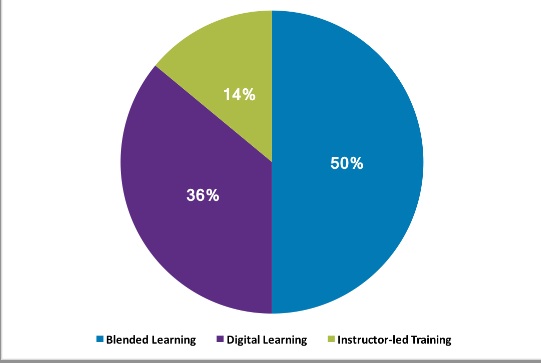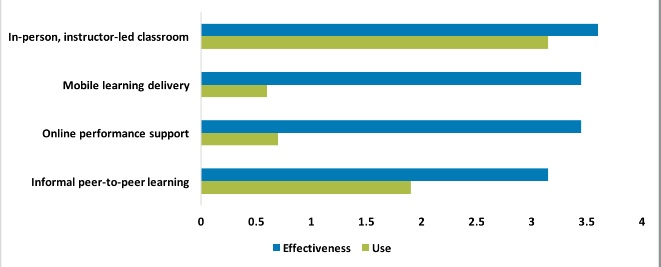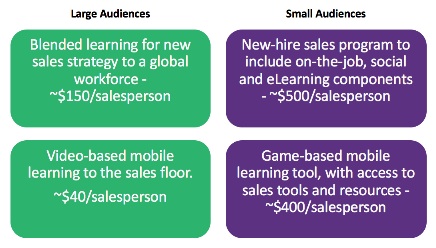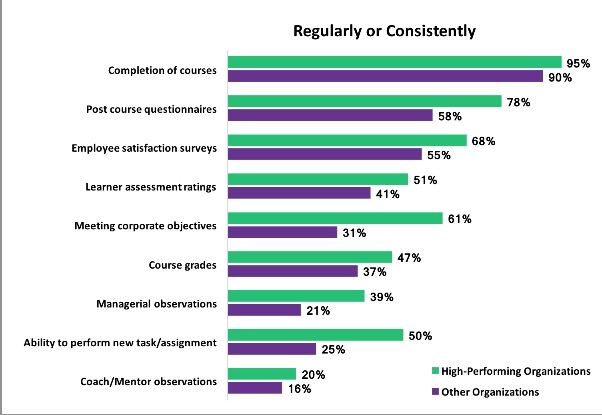
Perhaps no function within an organization has benefitted more from the newest wave of technologies than the sales force. Social technology and advances in mobile apps and devices have put sales professionals closer to their clients than ever before. Yet in many organizations, sales training consists mainly of big blocks of face-to-face time in training seminars or similar gatherings.
The 70-20-10 model has been around for two decades, and organizations are just now re-exploring the framework in an effort to deliver a more blended learning experience. For the sales force, it’s particularly important to tailor programs to the where and when, offering learning on demand and just in time on the job. Methods vary. For example, discussion forums and internal YouTube channels are being used to facilitate knowledge transfer from older, departing employees to the incoming Millennial-heavy workforce.
Technology is driving organizations to take a closer look at performance development and to offer employees new ways of collaborating and learning. Of the 20 successful sales training programs Brandon Hall Group studied from its global Excellence in Learning awards program, the majority focused on comprehensive product sales training or new sales models. This is important because it shows an increased reliance on electronic forms of training to drive sales behaviors and sales of products.
Figure 1: Learning Modalities Used in Sales Training

Source: Review of 20 award-winning sales training programs from Brandon Hall Group Excellence Awards
As you can see, effective sales programs are being created as blended or digital learning at a much higher rate than instructor-led training (ILT) programs.
Embedded Learning Is Essential
Embedded learning refers to building knowledge that is grounded in day-to-day job experience. It’s learning while doing, whether asking a quick question of a colleague or getting a video update on a project. Examples include:
- Contextual: Learning based on role, location, or development path
- Small: Short videos, quick updates
- Informal: Everyday tips and pointers; ad hoc
- Mobile: Learning available during free time at moments of need
- Social: Discussions, recommendations with colleagues, subject matter experts (SMEs), and others
Learning Delivery Use/Effectiveness
Although technology-based training is increasingly popular, instructor-led training—in-person or virtual—does have value and appeal. The issue is whether live training is being used too much. Sales teams, especially, are suited to consuming mobile learning because keeping sales teams in a room for an extended period of time costs money for travel, and costs even more in lost productivity and sales. For sales training, more organizations are adopting a “mobile first approach,” and some even go beyond that to a “feature parity” approach that delivers the same functionality across all platforms.
Figure 2: Use and Effectiveness of Learning Modalities (4-point scale)

Source: 2016-2017 Brandon Hall Group Training Benchmarking Study (n=302)
Designing effective sales training does not mean starting from scratch. Traditional content can be converted to forms that are cost-effective and impactful to the learner. This includes:
- Refitting content to suit mobile viewing
- Making content suitable for just-in-time consumption
- Building training as tools to support sales
- Moving “end-to-end” programs online
Cost of Modern Sales Training
Brandon Hall Group reviewed more than 20 case studies on sales training. The average program cost of $866,000 is reasonable, especially considering that the cost per head ranges from $5 per person for transitioning ILT to digital, to $4,000 per person for a major shift in sales strategy. Some of the larger audiences were sales forces from smaller companies, so this data from the case studies does not indicate that larger companies can produce training for less cost per person, although scale will always help with digital learning in that respect.
Figure 3: Examples of “Modern” Sales Learning

Source: Review of 20 award-winning sales training programs from Brandon Hall Group Excellence Awards
Sales Training Measurement
Measurement is important to understand the effectiveness of the training. Two critical methods are measuring how well the training meets corporate objectives and whether it enables learners to perform new tasks or assignments. High-performing organizations—those with improving key performance indicators (KPIs) such as revenue, employee engagement, and customer satisfaction —do this far better than other organizations.
Some key points from our review of the case studies and our learning research:
- More companies are using sales measures (win rate, deal size, pipeline).
- Traditional training measures also are being used (consumption of content, hours of training, etc.).
- Few companies are using testing and certification.
Figure 4: Measurement Methods

Source: 2016-2017 Brandon Hall Group Training Benchmarking Study (n=302)
Conclusion
In some ways, the sales force is the most measured function in a company. But the link between learning and return on investment (ROI) is more than meeting a quota. Measures of sales training include the win rate, of course, but also the size of the deal and how it fits into the organization’s goals.
For the sales force, the idea is to reduce the number of face-to-face trainings and make them more strategic. Then use mobile to make sales tools available where and when needed across all devices.
Max Meadow is vice president of Strategic Engagements and principal HCM advisory analyst for Brandon Hall Group, an independent research and analyst firm covering Human Capital Management. Practices include Learning & Development, Talent Management, Talent Acquisition, Leadership Development, and Workforce Management/HR. Join us for our Women in Leadership Summit June 15-16 in South Florida.




